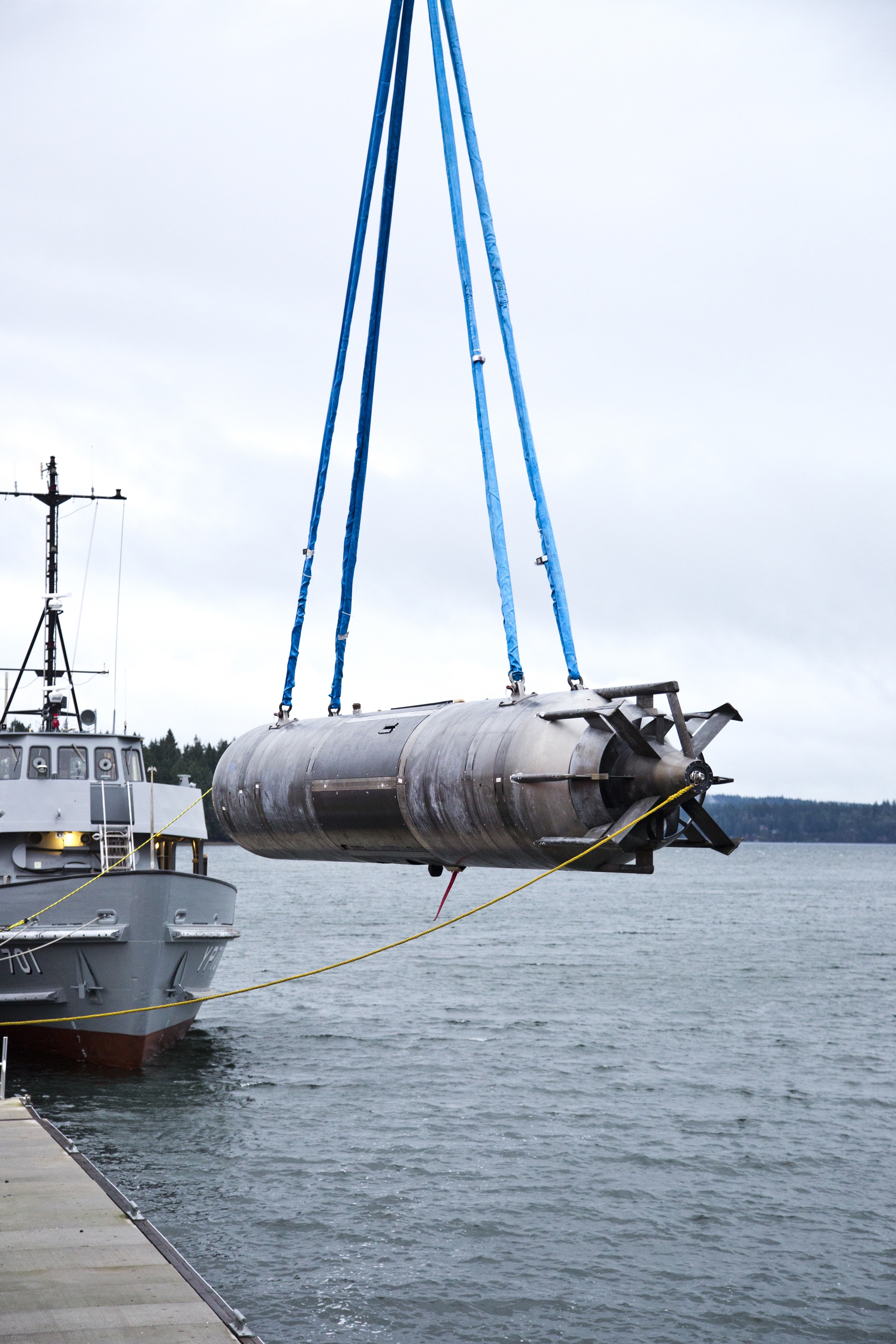
NATIONAL Harbor, Md. — The Navy’s Large Displacement Unmanned Underwater Vehicle (LDUUV) effort has split into two concurrent programs, one to continue experimenting with software and autonomy and the other as an accelerated acquisition program intended to put a boat in the water quickly.
The Program Executive Office for Littoral Combat Ships’ (PEO LCS) Unmanned Maritime Systems program office (PMS 406) designated its rapid acquisition program the “Snakehead LDUUV” a couple months ago and is aiming to put a prototype UUV in the water in 2019, deputy program manager Howard Berkof said Monday at the Navy League’s annual Sea-Air-Space exhibition.
“We are leveraging existing technologies out there – mature, proven technologies out there – and building this first Phase 1 vehicle to get it in the water as quickly as possible,” he said.
“The objective is to get the first Phase 1 prototype wet in ‘19. So get it in the water as quickly as possible, get it into the hands of our sailors, enable them to use it and get those lessons learned and that feedback, and that will feed our future LDUUV acquisition program. In fact, it will feed our family of UUV programs.”
The Phase 1 Snakehead LDUUV will focus on intelligence and preparation of the environment (IPOE) and intelligence, surveillance and reconnaissance (ISR) mission sets, and Phase 2 would seek to add extended ranges to both missions. The eventual program of record Snakehead Increment 1 would include additional payloads, potentially including electronic warfare, mine warfare, mine countermeasures, anti-submarine warfare and anti-surface warfare, according to a UUV Systems Vision chart included in Berkof’s presentation.
The Navy last year decided to use the Naval Undersea Warfare Center- Newport as the government lead systems integrator for the Snakehead effort to save time. Industry is engaged in the program and working on the power system, sensors and other aspects, but the Navy itself will design and integrate the vehicle that will end up in the water, Berkof explained.
Additionally, the project timeline will be boosted through its selection by Navy leadership as one of three rapid acquisition projects to test out new authorities – in LDUUV’s case, the authorities in the Maritime Accelerated Capabilities Office. Berkof explained that Snakehead LDUUV will still have to reach traditional acquisition milestones, but the Navy will be “waiving some of the traditional program of record requirements, with leadership approval, and we have a direct line” to senior service leadership to help remove any roadblocks that pop up.
At the same time, Berkof told USNI News after his presentation, the Office of Naval Research will continue with its LDUUV Innovative Naval Prototype effort. The first two ONR LDUUV INP vehicles will go to the unmanned systems program office, Berkof said – one of which is an empty hull that will be put on display and the other which will go to a “UUVron” squadron out of NUWC-Keyport, Wash., to learn operational lessons that will feed the Snakehead program.
With its two remaining vehicles, ONR will continue research and development efforts on “specifically software and autonomy and all that. Command and control. So ONR will continue maturing the two other vehicles, and then at some point they will transition to 406 in the future,” Berkof said.
The Navy has a similar multi-pronged approach for the Extra Large UUV (XLUUV) – a 54-inch diameter UUV, compared to the 48-inch diameter LDUUV, which would likely be launched from a pier instead of from a ship at sea. ONR is in the process of building its second XLUUV INP boat, and at the same time PMS 406 has already released a request for proposals for construction that should be awarded by the end of the year. This mine warfare asset will go through the same dual-pronged learning effort from ONR and the unmanned systems program office – though not as a rapid acquisition program – and ultimately all the prototyping work will lead to an unmanned system with multiple payloads for multiple mission areas.
Berkof said the Navy set up its LDUUV and XLUUV programs in a similar fashion, and the only reason LDUUV was chosen for rapid acquisition was the fact that it was farther along.





